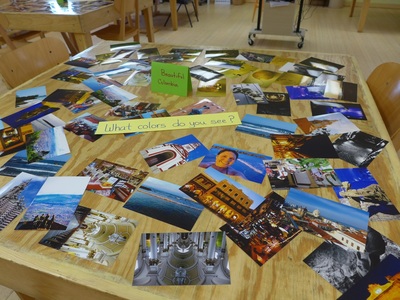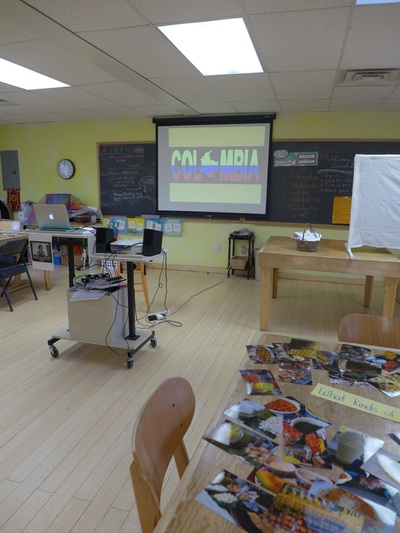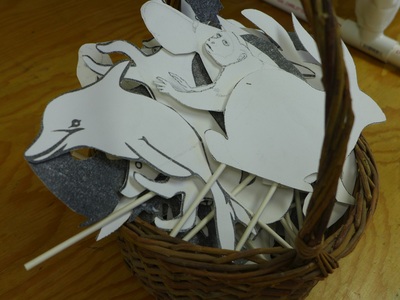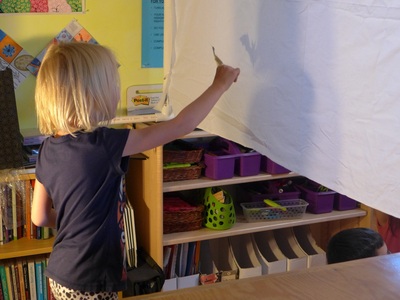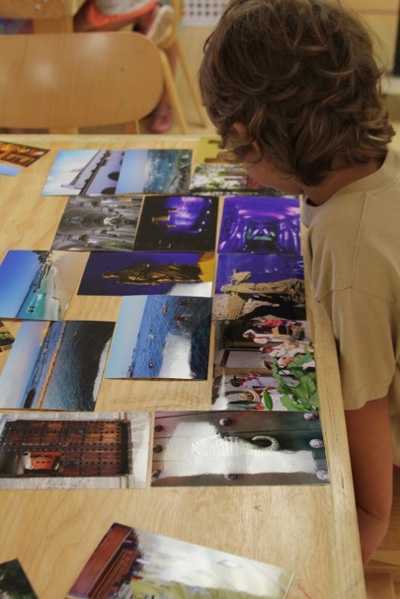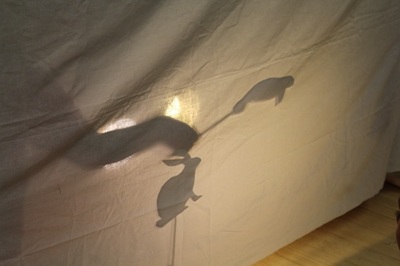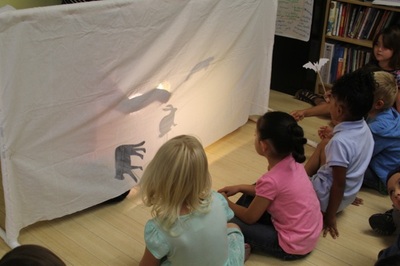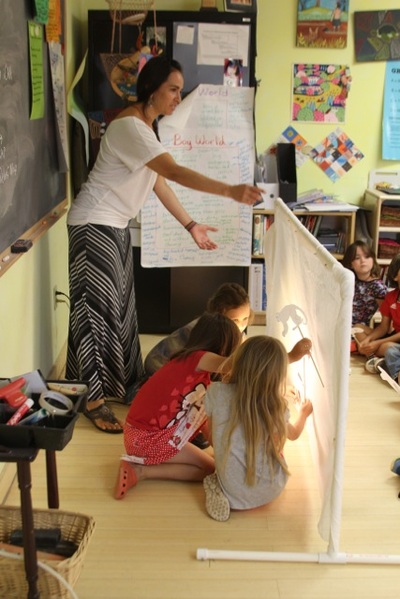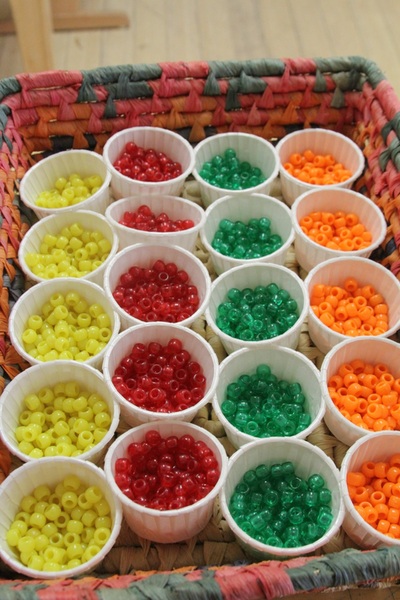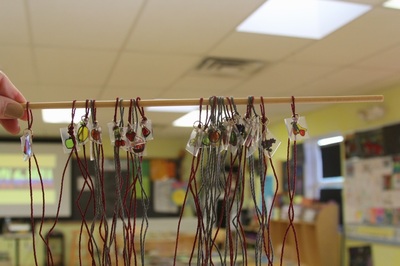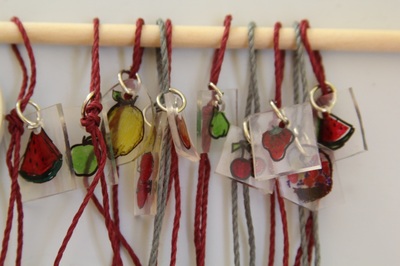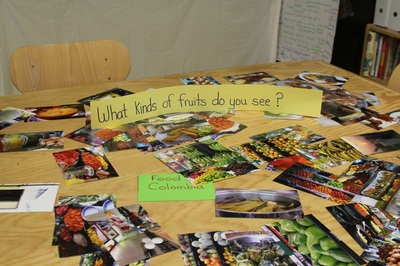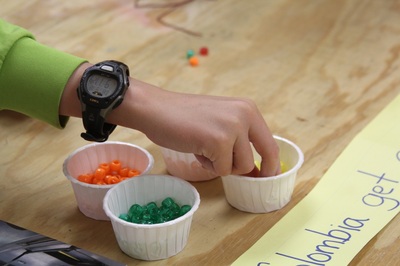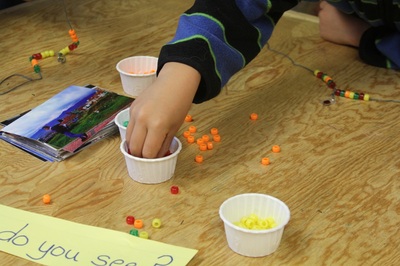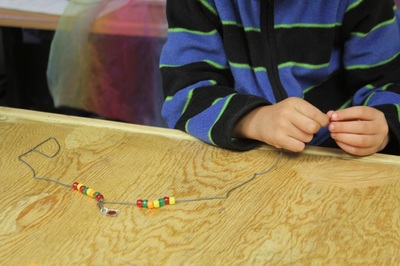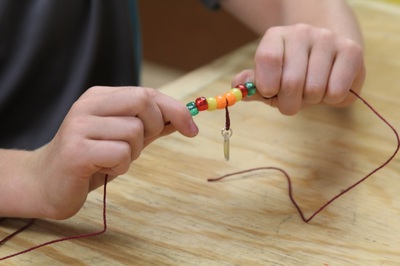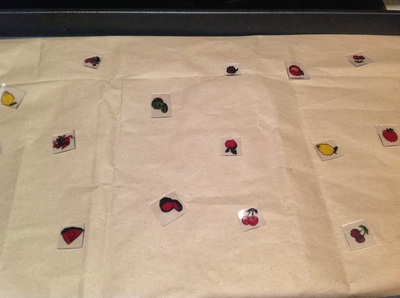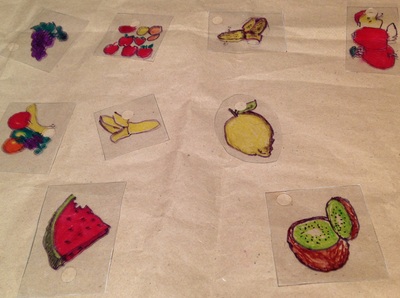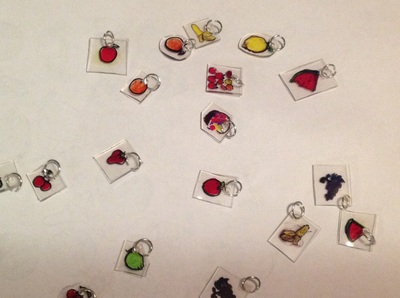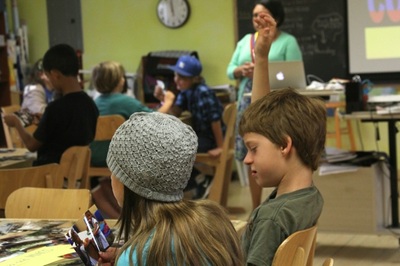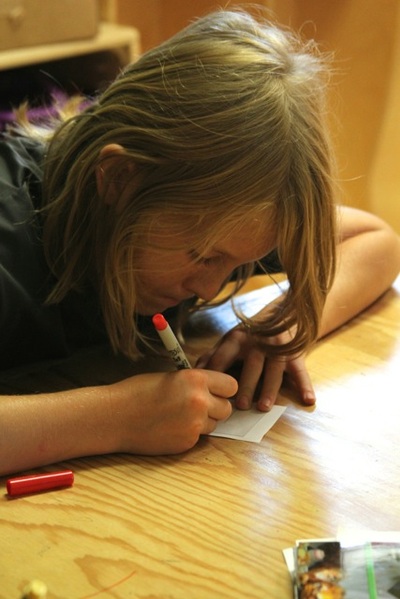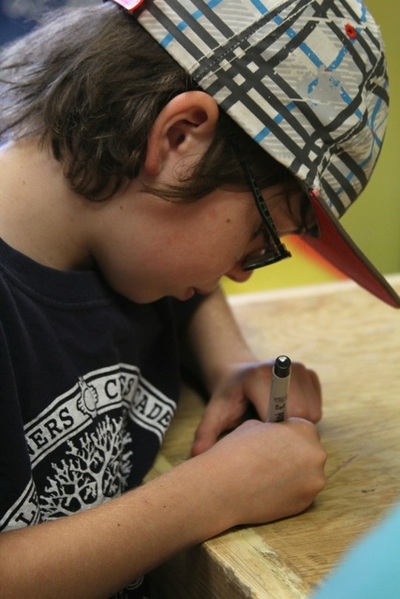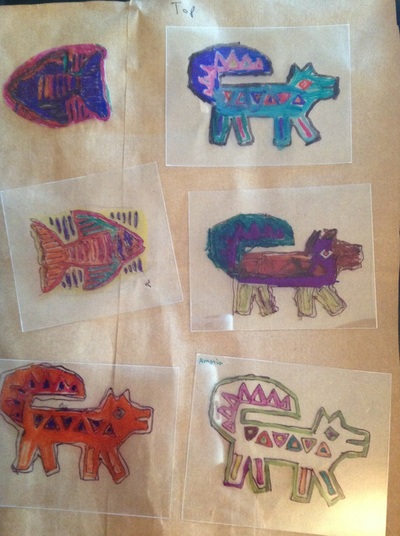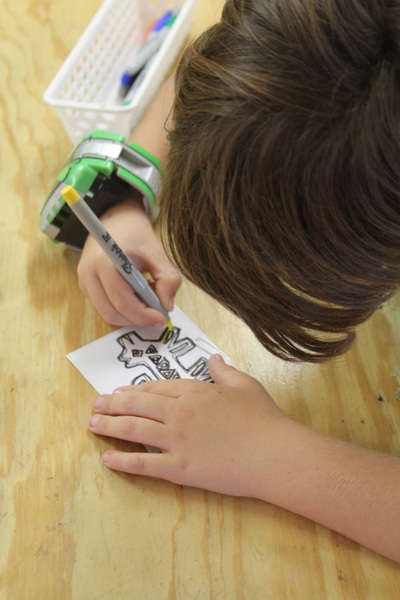Colombia Presentations for Elementary and Middle School Students, Families, and Faculty
Objectives:
Provide a window for students, faculty, staff, parents and community members to:
I will:
Audiences:
Essential Questions:
What are some expressions of Colombian culture?
How is English important to Colombia’s future?
How are schools in Colombia and MMCS similar and different?
How are Colombia and the United States similar and different?
Why is it important to visit places beyond our borders (geographical, linguistic, cultural, personal)?
Where in the world would you like to go?
Key Concepts:
Colombia is a beautiful, diverse, evolving country
Recognizing others’ perspectives is important to understanding ourselves and the world
Travel offers the opportunities for fun, adventure, learning, changing, connecting with people
We are connected with people in the world
Middle School Presentations
ESSENTIAL QUESTIONS
What are some expressions of Colombian culture?
How is English important to Colombia’s future?
How are schools in Colombia and MMCS similar and different?
Why is it important to visit places beyond our borders (geographical, linguistic, cultural, personal)?
Where in the world would you like to go?
tokens/ experiences
Slide show
Photo exploration
Mola embroidery and/ or shrink dink molas
Limonada de coco
postcard photo to take home
coffee candy
Elementary School Presentations
ESSENTIAL QUESTIONS
What are some expressions of Colombian culture? - all grades
How is English important to Colombia’s future? - 3 - 5 grades
How are schools in Colombia and MMCS similar and different? - all grades
Why is it important to visit places beyond our borders (geographical, linguistic, cultural, personal)? - grades 3 - 5
Where in the world would you like to go? - all grades
tokens/ experiences
slideshow and/ or photo exploration
developmentally appropriate art activity (see menu)
small photo cards to take home
limonada de coco & lemonade
Family Presentations
ESSENTIAL QUESTIONS
What are some expressions of Colombian culture?
How is English important to Colombia’s future?
How are schools in Colombia and MMCS similar and different?
How are Colombia and the United States similar and different?
Why is it important to visit places beyond our borders (geographical, linguistic, cultural, personal)?
Where in the world would you like to go?
tokens/ experiences
slideshow and/ or photo exploration
Paper Molas
small photo cards to take home
limonada de coco & coffee
Faculty Presentations
ESSENTIAL QUESTIONS
What are some expressions of Colombian culture?
How is English important to Colombia’s future?
How are schools in Colombia and MMCS similar and different?
How are Colombia and the United States similar and different?
Why is it important to visit places beyond our borders (geographical, linguistic, cultural, personal)?
Where in the world would you like to go?
tokens/ experiences
slideshow and/ or photo exploration
Paper or embroidery molas, if time allows
list of resources about Colombia
small photo cards to take home
limonada de coco & coffee, if time allows
Menu of Activities
Slideshow -all grades - students will view a variety of photos and videos that depict elements of Colombia’s culture, the people, school life, foods, and geography.
Photo exploration - all grades - students will be able to look at, sort, ponder, and explore a variety of photos that depict elements of Colombia’s culture, the people, school life, foods, and geography.
Shadow Puppets - structured for Kindergarten and 1st grade students - students will choose 1 - 2 animals (pre-cut on card stock) that are found in Colombia. Students will color their shape then tape shape to a blunt craft skewer. In small groups, students will perform an shadow animal parade behind a white curtain with back-lighting to the audience of children and teachers.
Fruit necklaces - structures for 1st and 2nd grade students - students will learn about the enormous variety of fruits grown in Colombia. Students will make their own fruit necklace with different color beads representing different Colombian fruits.
Shrinky Dink Mola Necklaces - structured for 3rd - 8th grade students - students will learn about one Colombian art form - molas. Students will trace or draw a simple Mola design on shrink dink plastic using permanent markers. Before shrinking, students will punch a hole. While shrink sinks are being baked, students will make a necklace with brightly colored beads. Using a jump ring, teachers/ parent volunteers will help students attach Molas to student necklaces.
Mola Embroidery - structured for 6th - 8th grade students/ adults - students will use a pre-drawn pattern to embroider a simple Mola design.
Paper Molas - structured for K - 8th grade students/ adults - students will use a pre-drawn pattern to create a paper mola using oil pastels, crayons, and/ or color pencils.
Provide a window for students, faculty, staff, parents and community members to:
- Investigate the World: Learn about the country of Colombia: history, geography, animals, schools/ education, foods, culture, and/ or arts
- Recognize Perspectives: Examine other’s perspectives and identified what influenced them and explain the impact of cultural interactions.
- Create an artistic representation of Colombia that they can keep.
I will:
- Communicate ideas about my experiences in Colombia, focusing on encouraging empathy, curiosity and an appreciation for the Colombian people and culture
- Take Action: address the MMCS Charter goal of Universal Empathy by providing a variety of educational opportunities for the MMCS community to learn about Colombia.
- Present a variety of tokens and/ or experiences: coffee candies, limonada de coco, postcard photos, slideshow with photos and videos
Audiences:
- middle school students through my Social Studies classes
- elementary school students through 50-minute lessons hosted in my classroom
- middle school families at Open House event
- whole-school family/ faculty event TBD
- MMCS and other faculties
- other
Essential Questions:
What are some expressions of Colombian culture?
How is English important to Colombia’s future?
How are schools in Colombia and MMCS similar and different?
How are Colombia and the United States similar and different?
Why is it important to visit places beyond our borders (geographical, linguistic, cultural, personal)?
Where in the world would you like to go?
Key Concepts:
Colombia is a beautiful, diverse, evolving country
Recognizing others’ perspectives is important to understanding ourselves and the world
Travel offers the opportunities for fun, adventure, learning, changing, connecting with people
We are connected with people in the world
Middle School Presentations
ESSENTIAL QUESTIONS
What are some expressions of Colombian culture?
How is English important to Colombia’s future?
How are schools in Colombia and MMCS similar and different?
Why is it important to visit places beyond our borders (geographical, linguistic, cultural, personal)?
Where in the world would you like to go?
tokens/ experiences
Slide show
Photo exploration
Mola embroidery and/ or shrink dink molas
Limonada de coco
postcard photo to take home
coffee candy
Elementary School Presentations
ESSENTIAL QUESTIONS
What are some expressions of Colombian culture? - all grades
How is English important to Colombia’s future? - 3 - 5 grades
How are schools in Colombia and MMCS similar and different? - all grades
Why is it important to visit places beyond our borders (geographical, linguistic, cultural, personal)? - grades 3 - 5
Where in the world would you like to go? - all grades
tokens/ experiences
slideshow and/ or photo exploration
developmentally appropriate art activity (see menu)
small photo cards to take home
limonada de coco & lemonade
Family Presentations
ESSENTIAL QUESTIONS
What are some expressions of Colombian culture?
How is English important to Colombia’s future?
How are schools in Colombia and MMCS similar and different?
How are Colombia and the United States similar and different?
Why is it important to visit places beyond our borders (geographical, linguistic, cultural, personal)?
Where in the world would you like to go?
tokens/ experiences
slideshow and/ or photo exploration
Paper Molas
small photo cards to take home
limonada de coco & coffee
Faculty Presentations
ESSENTIAL QUESTIONS
What are some expressions of Colombian culture?
How is English important to Colombia’s future?
How are schools in Colombia and MMCS similar and different?
How are Colombia and the United States similar and different?
Why is it important to visit places beyond our borders (geographical, linguistic, cultural, personal)?
Where in the world would you like to go?
tokens/ experiences
slideshow and/ or photo exploration
Paper or embroidery molas, if time allows
list of resources about Colombia
small photo cards to take home
limonada de coco & coffee, if time allows
Menu of Activities
Slideshow -all grades - students will view a variety of photos and videos that depict elements of Colombia’s culture, the people, school life, foods, and geography.
Photo exploration - all grades - students will be able to look at, sort, ponder, and explore a variety of photos that depict elements of Colombia’s culture, the people, school life, foods, and geography.
Shadow Puppets - structured for Kindergarten and 1st grade students - students will choose 1 - 2 animals (pre-cut on card stock) that are found in Colombia. Students will color their shape then tape shape to a blunt craft skewer. In small groups, students will perform an shadow animal parade behind a white curtain with back-lighting to the audience of children and teachers.
Fruit necklaces - structures for 1st and 2nd grade students - students will learn about the enormous variety of fruits grown in Colombia. Students will make their own fruit necklace with different color beads representing different Colombian fruits.
Shrinky Dink Mola Necklaces - structured for 3rd - 8th grade students - students will learn about one Colombian art form - molas. Students will trace or draw a simple Mola design on shrink dink plastic using permanent markers. Before shrinking, students will punch a hole. While shrink sinks are being baked, students will make a necklace with brightly colored beads. Using a jump ring, teachers/ parent volunteers will help students attach Molas to student necklaces.
Mola Embroidery - structured for 6th - 8th grade students/ adults - students will use a pre-drawn pattern to embroider a simple Mola design.
Paper Molas - structured for K - 8th grade students/ adults - students will use a pre-drawn pattern to create a paper mola using oil pastels, crayons, and/ or color pencils.
Animals of Colombia
Presentation for kindergarten and first grade classes
Presentation for kindergarten and first grade classes
Your browser does not support viewing this document. Click here to download the document.
Photos from my lesson with the MMCS Kindergarten & First Grade Classes
Fruits of Colombia
Presentation for second grade class
Presentation for second grade class
Photos from my lesson with the MMCS First Grade Class
Colombian Molas
Presentation for MMCS Fourth grade class
Presentation for MMCS Fourth grade class
Photos from my lesson with the MMCS Third & Fourth Grade Classes
